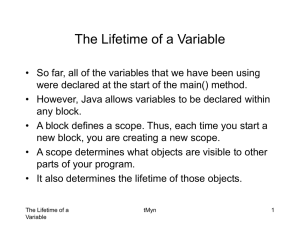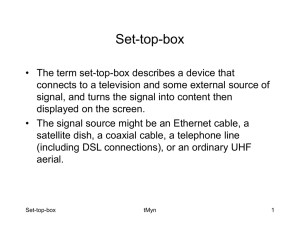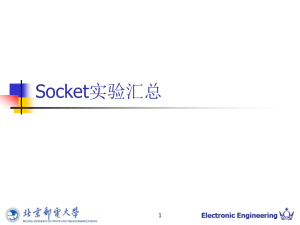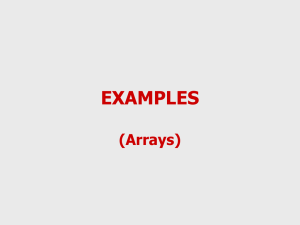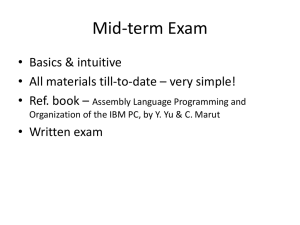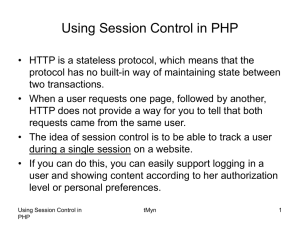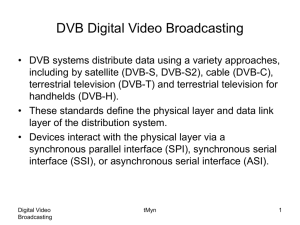Data Type Conversion and Casting
advertisement
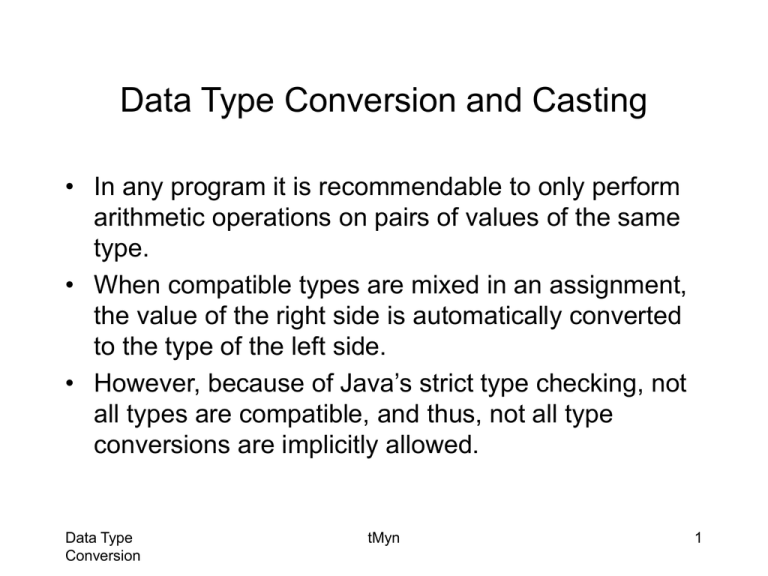
Data Type Conversion and Casting
• In any program it is recommendable to only perform
arithmetic operations on pairs of values of the same
type.
• When compatible types are mixed in an assignment,
the value of the right side is automatically converted
to the type of the left side.
• However, because of Java’s strict type checking, not
all types are compatible, and thus, not all type
conversions are implicitly allowed.
Data Type
Conversion
tMyn
1
• For example, boolean and int are not compatible.
• When one type of data is assigned to another type of
variable, an automatic type conversion will take place
if
– The two types are compatible.
– The destination type is larger than source type.
• When these two conditions are met, a widening
conversion takes place.
• For example, the int type is always large enough to
hold all valid byte values, and both int and byte are
integer types, so an automatic conversion from byte
to int can be applied.
Data Type
Conversion
tMyn
2
• For widening conversions, the numeric types,
including integer and floating-point types, are
compatible with each other.
• There are no automatic conversions from the numeric
types to char or boolean. Also, char and boolean are
not compatible with each other.
• However, an integer literal can be assigned to char.
Data Type
Conversion
tMyn
3
• Although the automatic type conversions are helpful,
they will not fulfill all programming needs because
they apply only to widening conversions between
compatible types.
• For all other cases you must employ a cast.
• A cast is an instruction to the compiler to convert one
type into another.
• Thus, it requests an explicit type conversion. A cast
has this general form:
(target-type) expression
• Here, target-type specifies the desired type to convert
the specified expression to.
Data Type
Conversion
tMyn
4
• For example, if you want to convert the type of the
expression x/y to int, you can write
double x, y;
//…
(int)(x/y)
• The parentheses surrounding x/y are necessary.
Otherwise, the cast to int would apply only to the x
and not to the outcome of the division.
• The cast is necessary here because there is no
automatic conversion from double to int.
Data Type
Conversion
tMyn
5
• When a cast involves a narrowing conversion,
information might be lost.
• For example, when casting a long into a short,
information will be lost if the long’s value is greater
than the range of a short because its high-order bits
are removed.
• When a floating-point value is cast to an integer type,
the fractional component will also be lost due to
truncation.
Data Type
Conversion
tMyn
6
package conversion;
public class Main
{
public static void main(String[] args)
{
int var1=12;
double var2=45.8921;
double result=var1+var2;
char letter=65;
System.out.println("The sum gives "+result);
System.out.println("The letter is "+letter);
}
}
run:
The sum gives 57.8921
The letter is A
BUILD SUCCESSFUL (total time: 0 seconds)
Data Type
Conversion
tMyn
7
package casting;
public class Main
{
public static void main(String[] args)
{
double x=10.0, y=3.0;
int i=(int)(x/y);
System.out.println("Integer outcome was: "+i);
}
}
run:
Integer outcome was: 3
BUILD SUCCESSFUL (total time: 1 second)
Data Type
Conversion
tMyn
8
